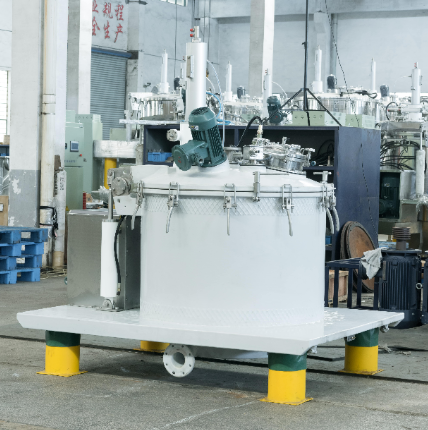Daily Checks: Protecting Your Auto Discharge Centrifuge
Your auto discharge centrifuge is the workhorse of your industrial setup, so starting each day with a quick check can save you from big headaches later. Begin by inspecting the scraper mechanism—since auto scraper centrifuge relies on smooth scraping to discharge solids, even a small buildup of residue can throw off its rhythm. Wipe down the scraper blade gently and check for signs of wear; a dull blade might leave behind debris, forcing the machine to work harder.
Next, look at the filters. Clogged filters are a common culprit for reduced efficiency, whether you’re using a bag pulling centrifuge or a standard auto discharge model. A quick visual check for dust or blockages can help maintain proper airflow and prevent overheating. Finally, tighten any loose bolts or connections. Vibrations from daily use can loosen parts over time, and a loose component in an industrial centrifuge equipment can lead to bigger breakdowns. These small steps take minutes but keep your machine running smoothly.
Lubrication: Keeping Decanter Centrifuge Equipment Running Smoothly
Lubrication is the lifeblood of any centrifuge, especially decanter centrifuge equipment. The rotating parts in decanters and screen worm centrifuge spin at high speeds, and friction here can wear down components fast. Start by checking the manufacturer’s guidelines—different models, like sedimentation centrifuge or vertical top discharge centrifuge, need specific types of lubricants. Using the wrong one can cause more harm than good.
For auto discharge centrifuge, focus on the bearing points. These take the most stress during operation, so regular lubrication (usually weekly, depending on usage) keeps them moving freely. Don’t overdo it, though—too much lubricant can attract dust and create a gummy buildup. Wipe away excess with a clean cloth after application. For high efficiency centrifuge models, which run at peak speeds, stick to a strict lubrication schedule—skipping it even once can lead to efficiency drops, costing you time and energy.
Handling Wear: Maintaining Top Suspended Centrifuge Performance
Top suspended centrifuge and vertical upper discharge centrifuge have unique components that need extra care. The suspension system in top suspended models, for example, absorbs a lot of vibration. Over time, springs or hinges here can weaken, leading to unstable operation. Inspect these parts monthly for cracks or stretching, and replace them at the first sign of wear—waiting can lead to misalignment, which strains the entire machine.
For vertical top discharge centrifuge, pay attention to the discharge valve. This valve controls how solids exit the machine, and a worn valve might leak or discharge unevenly, affecting product quality. Clean the valve regularly with a mild solvent to remove residue, and check the seals for cracks. Remember, replacing a small part like a seal is far cheaper than fixing a major leak that damages other components. By staying on top of wear, you keep your industrial centrifuge equipment in top shape.
Cleaning: Preserving Bag Pulling Centrifuge and More
Proper cleaning is non-negotiable, especially for bag pulling centrifuge and auto scraper centrifuge. These models handle a lot of solids, and leftover residue can corrode surfaces or clog moving parts. After each shift, take time to clean the drum or bowl—use a soft brush and warm, soapy water (avoid harsh chemicals that might damage metal). For decanter centrifuge equipment, flush the spiral conveyor with water to remove any trapped particles.
Don’t forget hard-to-reach spots, like the corners of the casing or around the motor. Dust and grime here can insulate the motor, causing it to overheat. A quick wipe with a damp cloth keeps things cool. For sedimentation centrifuge, which relies on precise separation, even a thin layer of residue can throw off separation efficiency. Regular cleaning ensures consistent results, which is key for any industrial operation.
Conclusion
Maintaining your auto discharge centrifuge and other industrial centrifuge equipment doesn’t have to be complicated. Daily checks, proper lubrication, addressing wear, and regular cleaning are simple steps that go a long way. These practices boost efficiency—keeping high efficiency centrifuge models running at peak performance—and extend lifespan, reducing the need for costly replacements. Whether you use a decanter centrifuge, auto scraper centrifuge, or vertical upper discharge centrifuge, investing time in maintenance means fewer breakdowns, smoother operations, and better results for your business.

